The Gramophone
In the late 1880’s, the ability to record and playback sound came about with the invention of phonographs. Fast forward to the 1950s, and vinyl records began taking over the corners of homes, record players giving the ability to curate a taste in music. In between these two lives gramophones— the in-between from cylinders and electric players— that were able to play-back recordings using the beginnings of watch we consider records today*.
Sound provides feeling, without a doubt, and music played through the diaphragm of a gramophone, or a record player even, has different soulful qualities than an average sound system. It’s form and shape being very distinguishable, the gramophone gives me as the artist the feeling of jazzy energy, and soulful vibration, inspiring the swirls within this piece.
Version 1
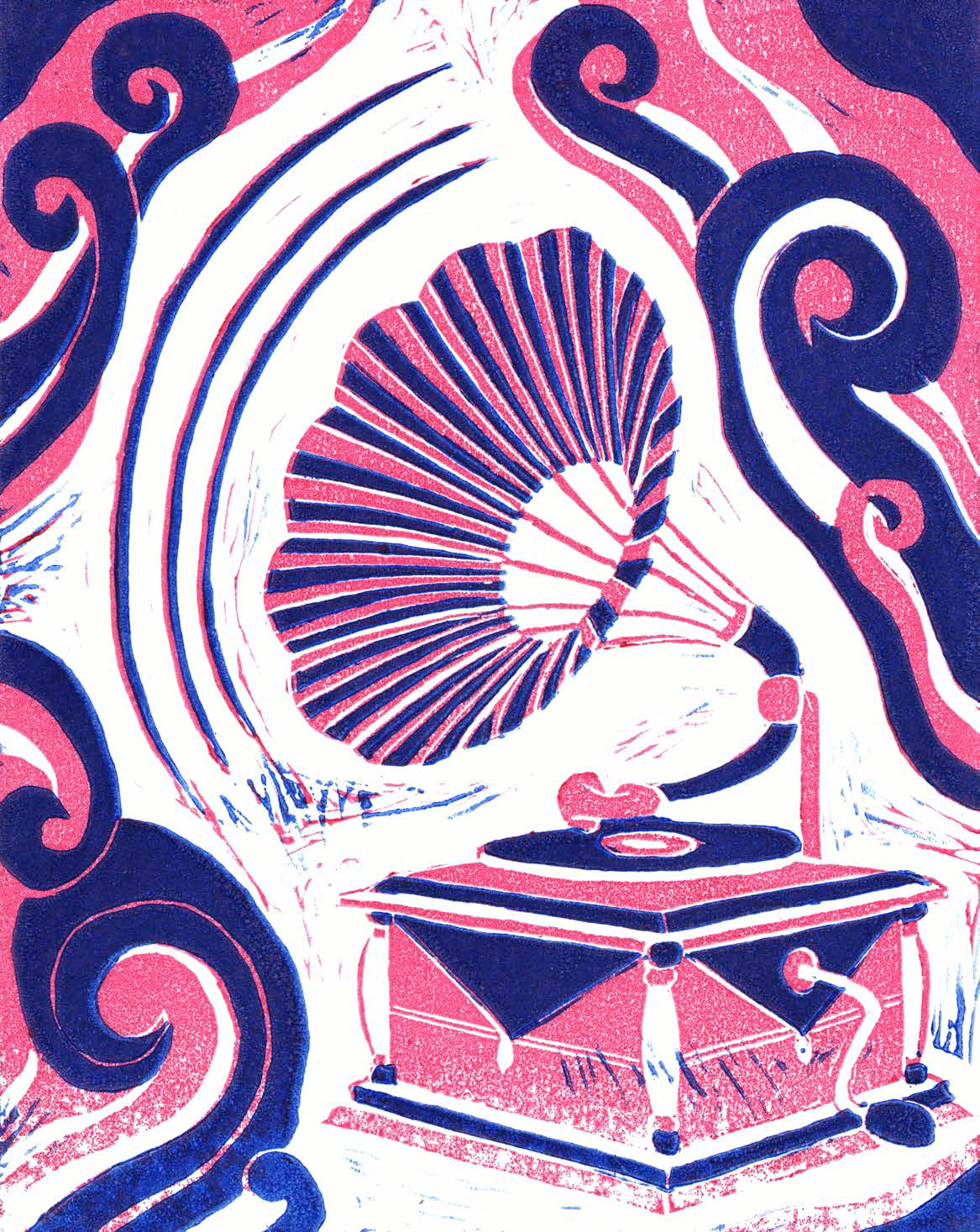
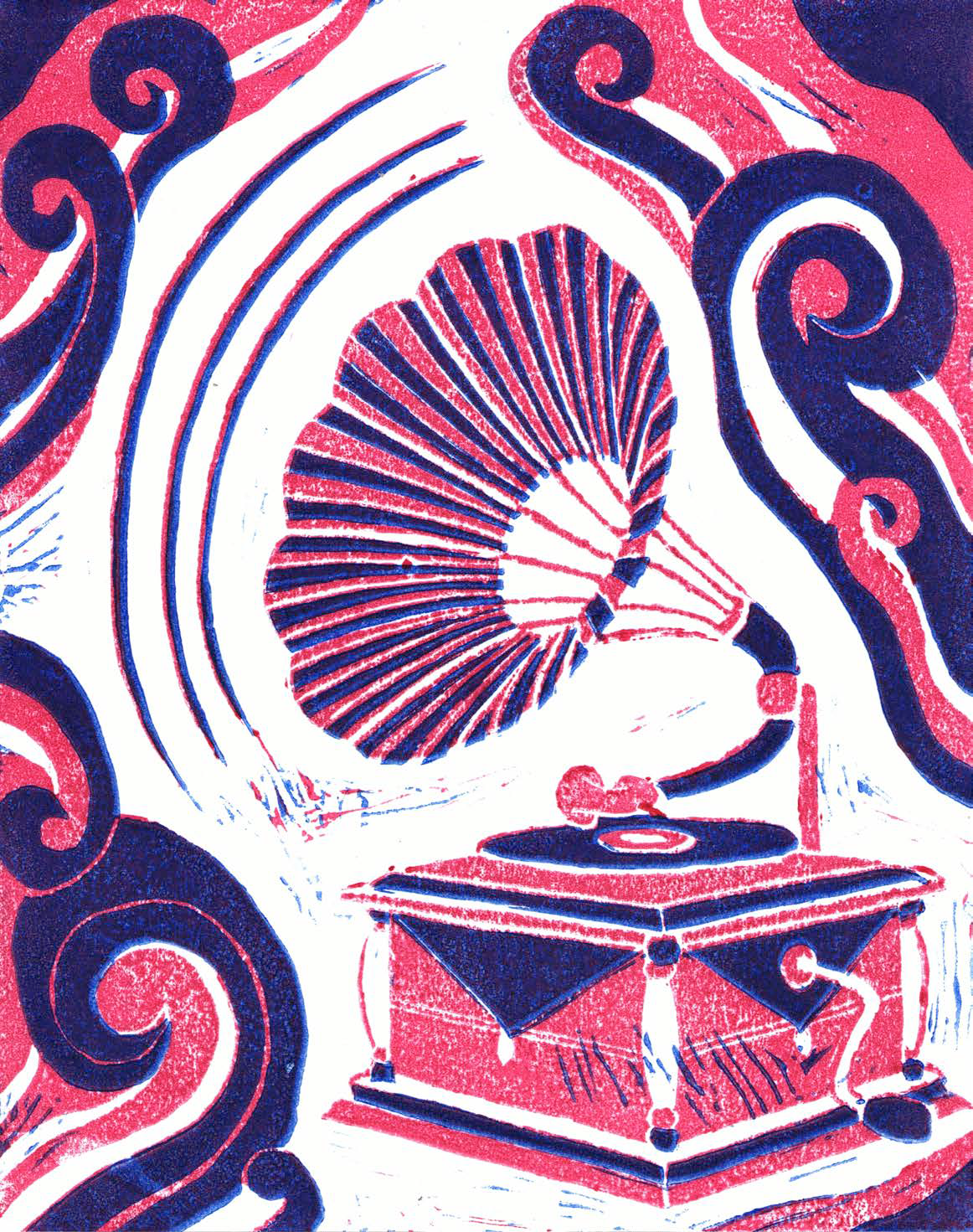
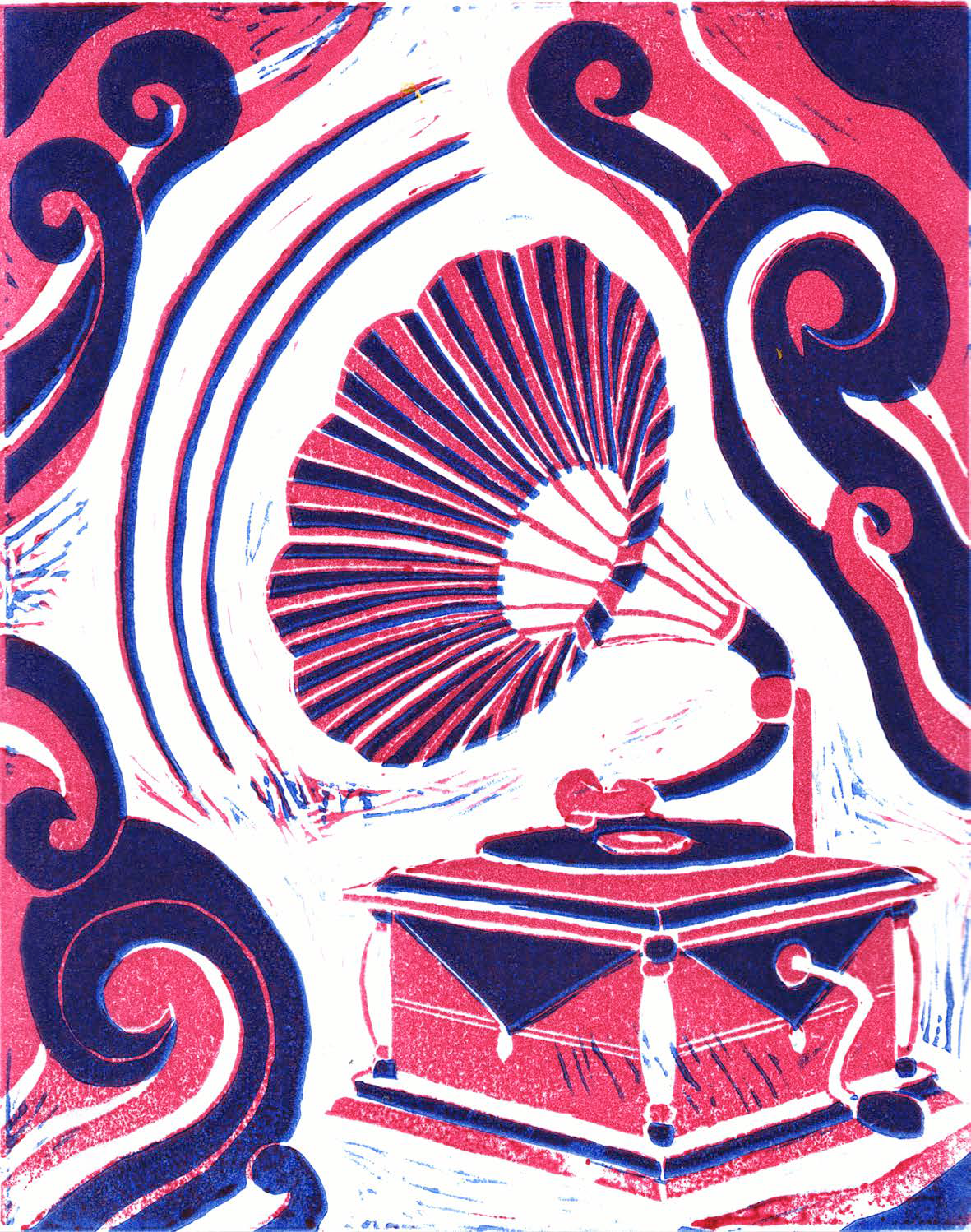
Version 2

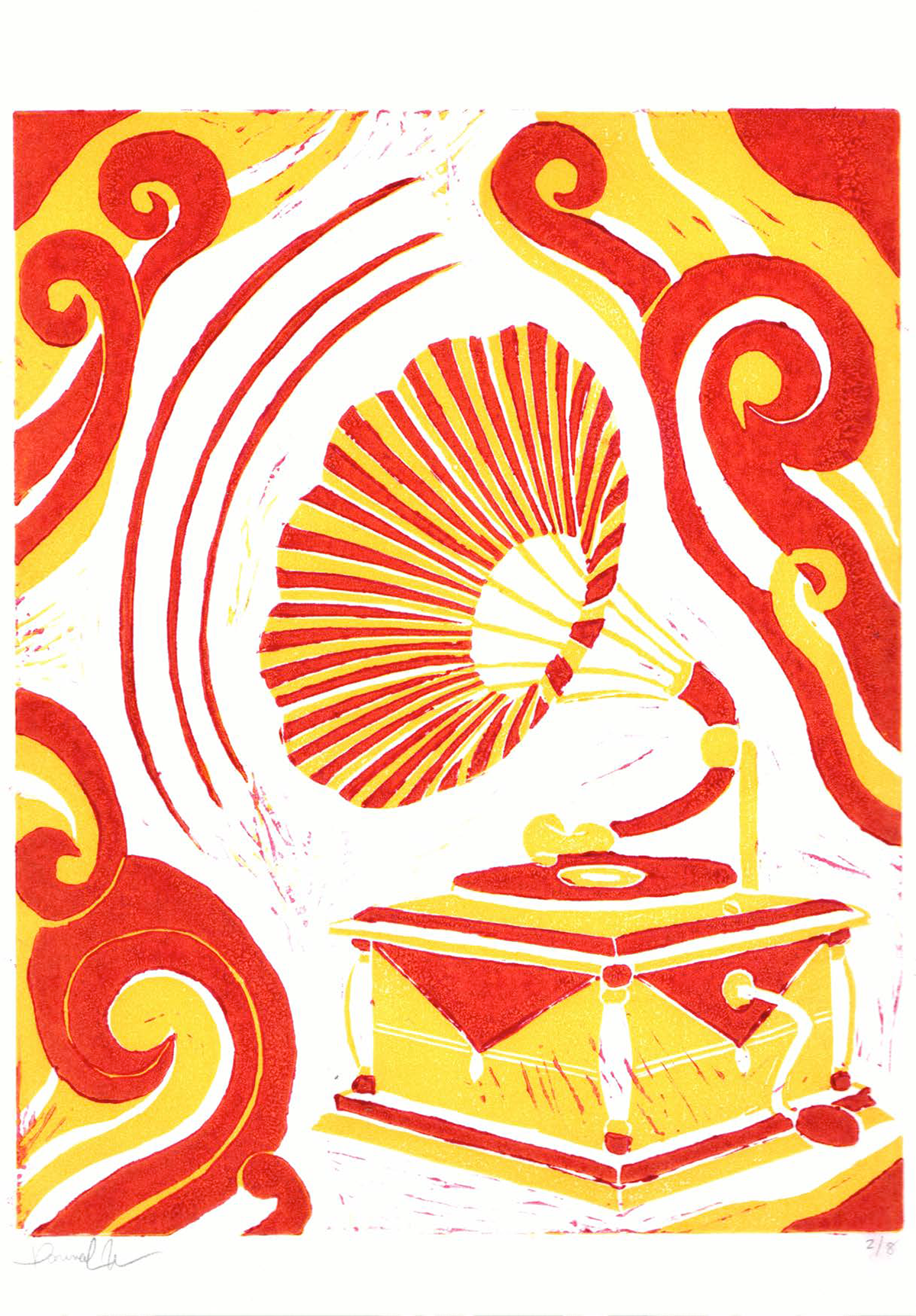
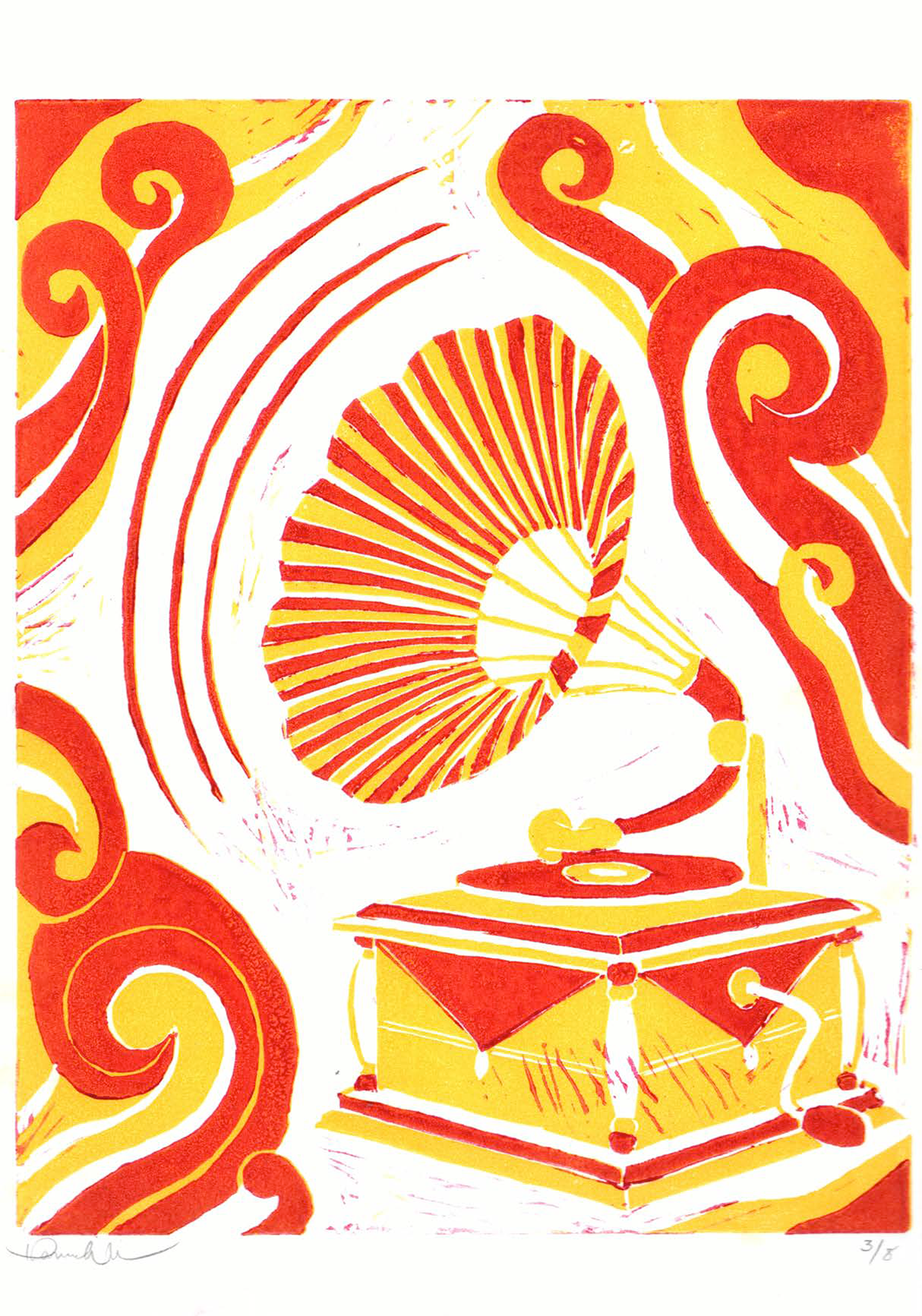
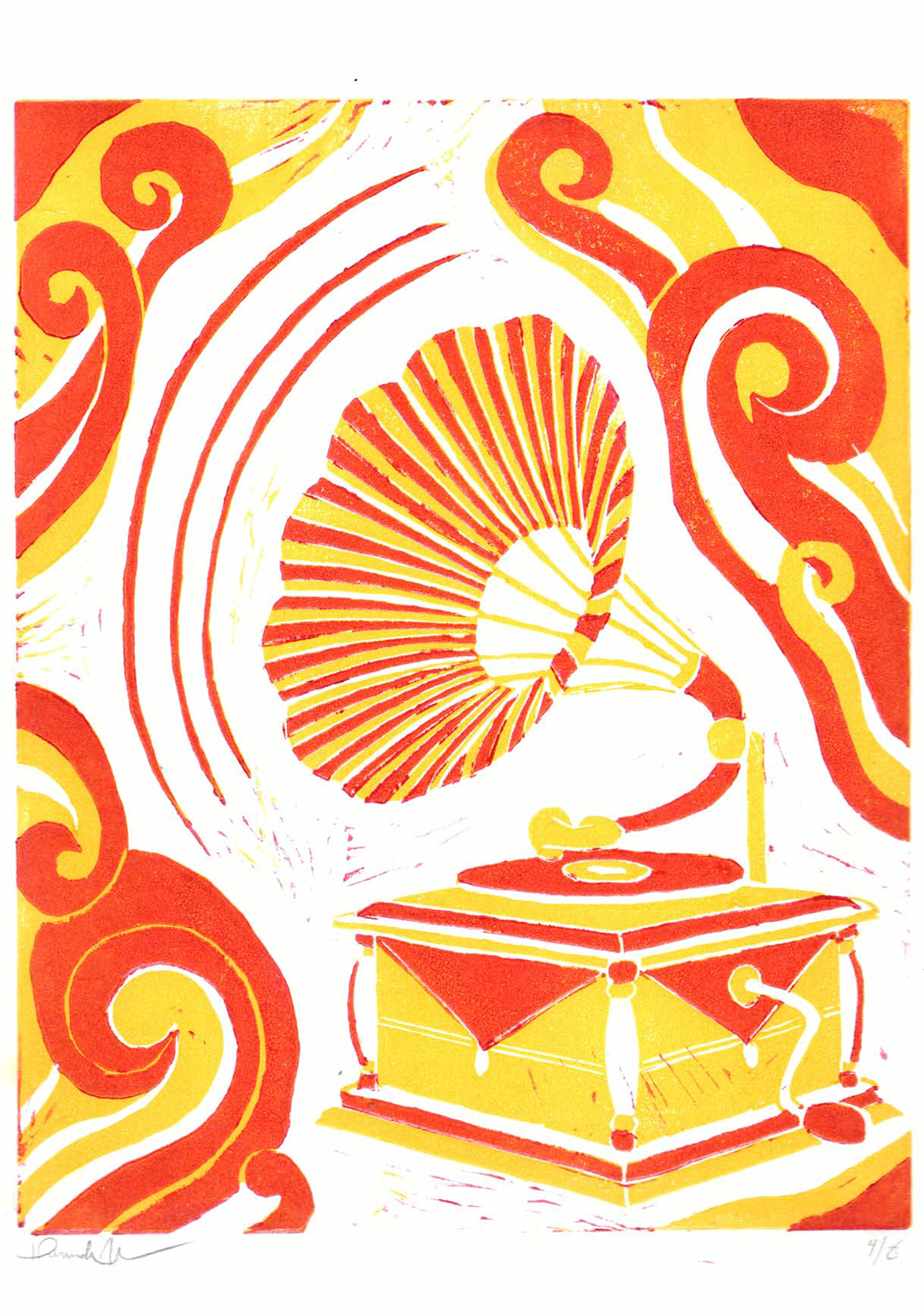
Linoleum block printing often picks up and prints unintended carve marks; In this collection of prints, they deliberately accentuate the vibration of the music and the unintended imperfections became a huge motivation towards choosing this subject to print. Yellow and a magenta-y red aims to provoke the joyous feeling of listening to music, especially the oldies tunes that I picture playing in the background of my head when I view these pieces.

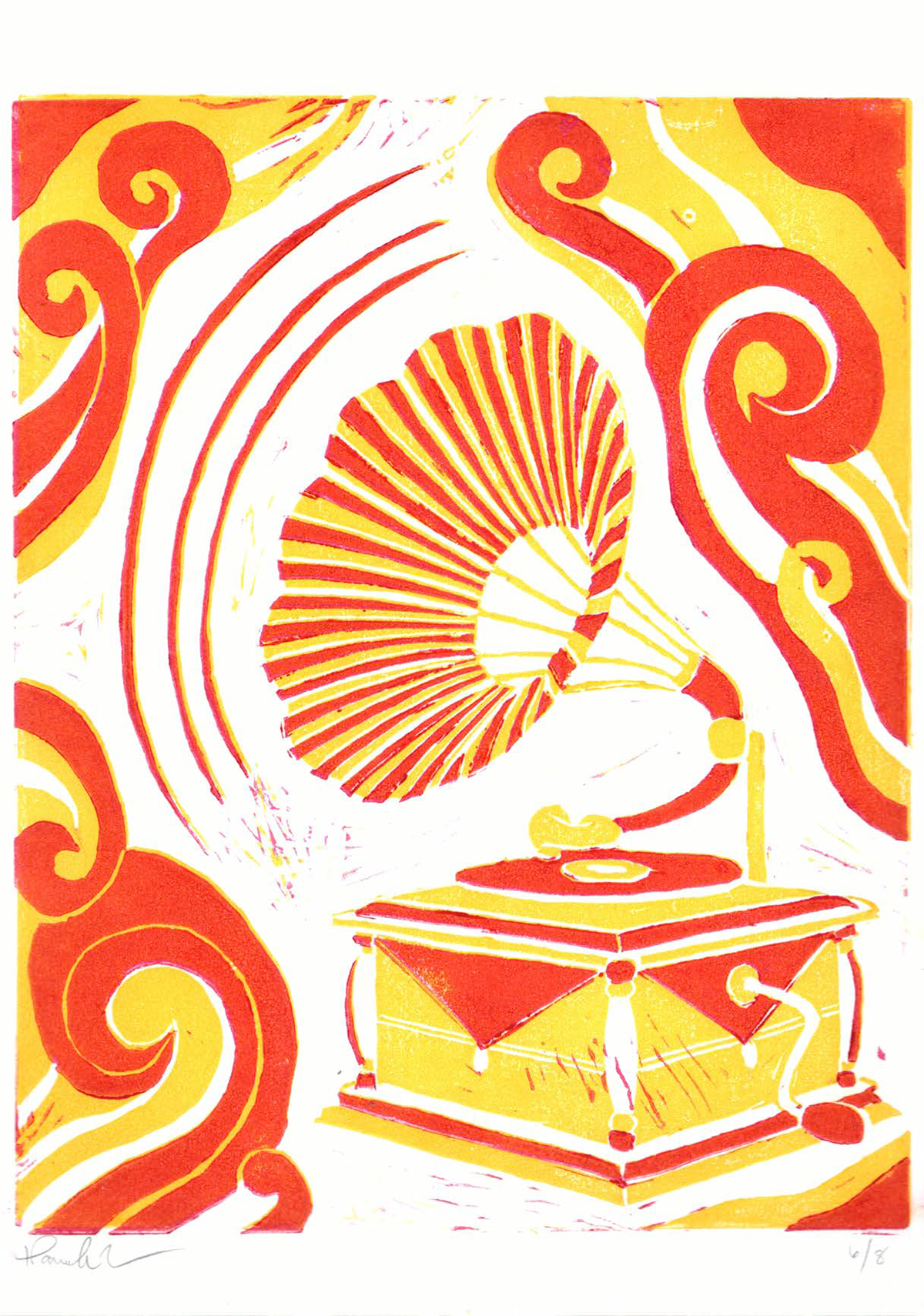
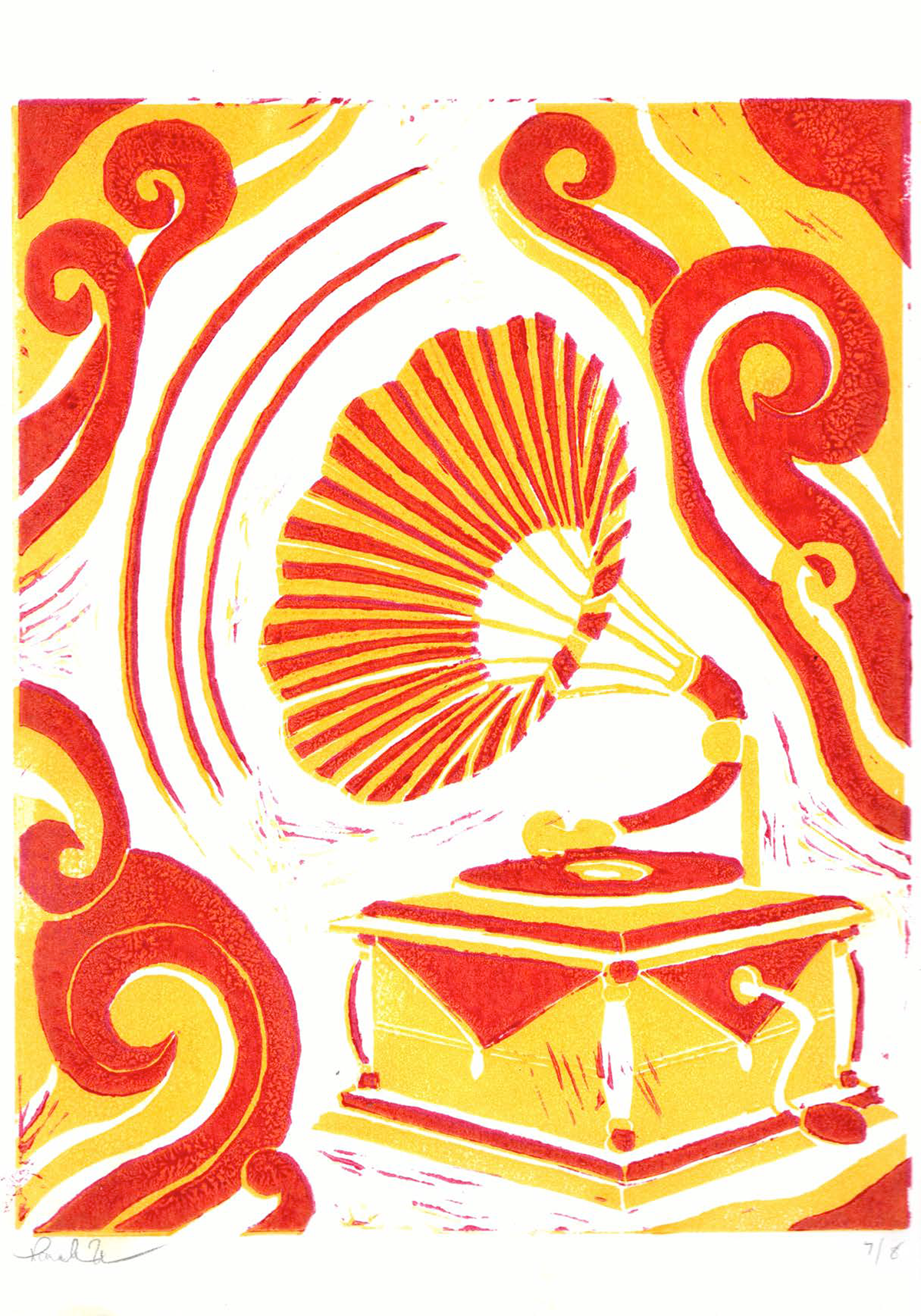

I was afraid I’d bitten off more than I could chew at the start of the project— carving the first layer was tedious work and took a good deal of time. Doing a piece so detailed as my first attempt at carving and linoleum block printing was a bold move, and ultimately I’m really glad I took the risk and trusted my craftsmanship as an artist to be able to produce a clean, final print set.
* “History of Gramophone - Who Invented Gramophone?” Gramophone History - Invention of the Gramophone and Vinyl, Sound Recording History, 2020, www.soundrecordinghistory.net/history-of-sound-recording/history-of-gramophone/.